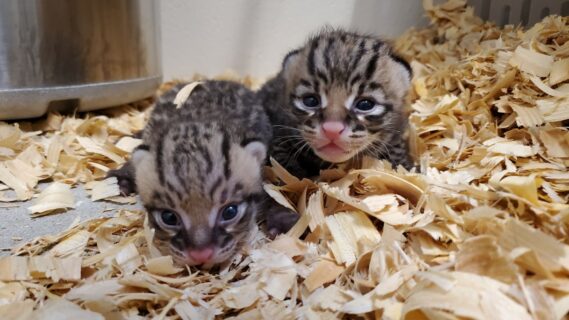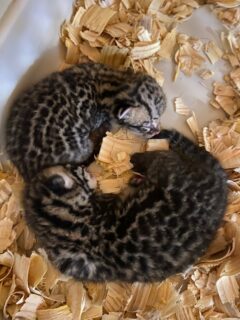Rare Ocelot Twins Born at the Zoo

Double the spots at the Houston Zoo! Two healthy ocelot cubs were born on May 29 to mom, Genoveve. The brother and sister duo have been named after their “spicy” attitudes. The male cub has been named Wasabi and can often be seen resting near his mom. His sister has been named Sriracha and she is the explorer who will typically be the first to interact with new things. These are the first ocelot births at the Zoo in 20 years. Wasabi and Sriracha’s father is Jack, the most genetically valuable ocelot in accredited Association of Zoos and Aquariums facilities. This is his first set of natural-born cubs. Genoveve and her twins are spending time together behind the scenes and will make their public debut soon.

The births of Wasabi and Sriracha are significant in getting closer to ensuring the felines have a robust future. Ocelots were once found all over South America and in the United States, as far east as Louisiana and Arkansas. While ocelot populations are declining in South America overall, their numbers are doing much better there than they are here. In the U.S., their total estimated population are between 50-80 ocelots, most of which are in Laguna Atascosa.
Ocelots are a medium-sized wildcat with a long ringed tail and slightly rounded ears. Adults weigh between 15 to 35 pounds, are about 30 to 40 inches in length with a tail up to 18 inches long. They differ from most other cat species in that they can turn their ankle joints around which allows them to literally climb down a tree.
The biggest threat to the ocelot’s survival is the loss of habitat. Every time you visit the Houston Zoo you are helping protect ocelots in the wild. The Zoo provides support for people protecting and replanting forests in Colombia to protect wild ocelot homes.
